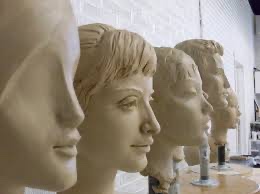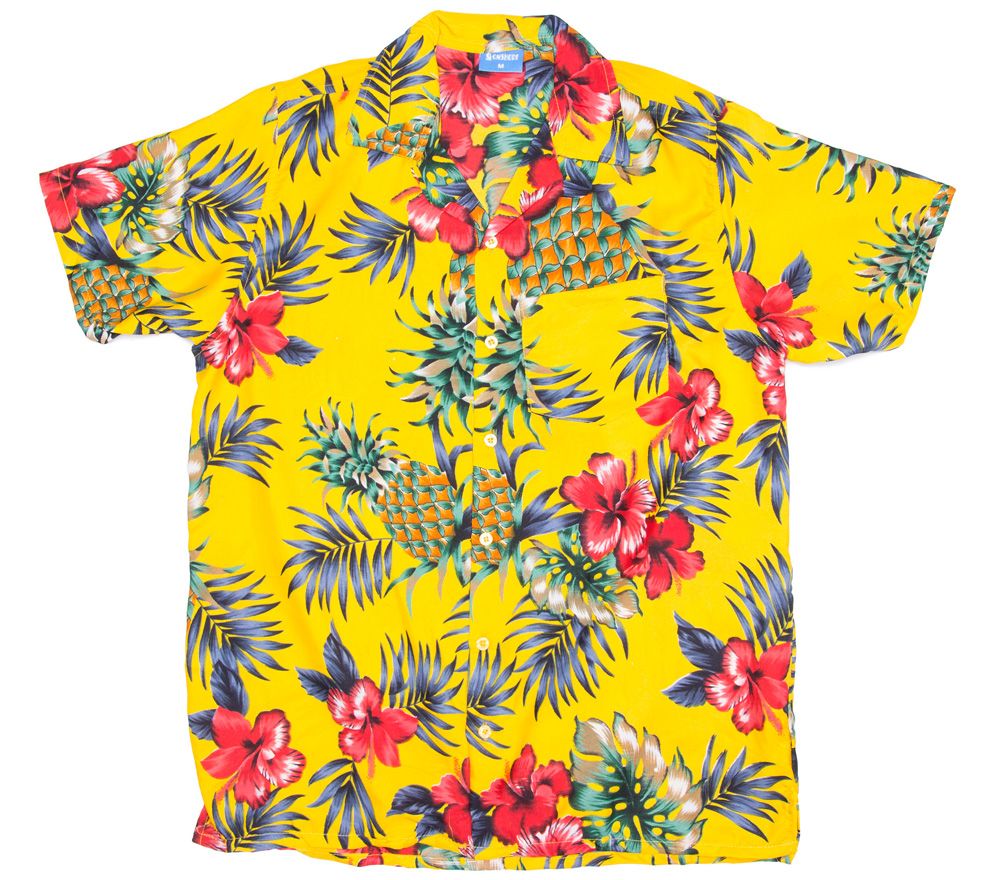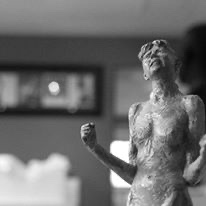Mannequin Monday – Scars Tell a Story

“A shuddering ripple, a thrill of strength.” Rainer Maria Rilke’s description of Auguste Rodin’s sculptures. Mannequin Monday this week examines the work of Rodin, with implications for authors.
I offer my own story, Scars Tell a Story, where I try to absorb some of Rodin’s artistic outlooks into my writing.
This Week’s Story
This week has been a serendipitous, convergent journey. I began by beginning to re-read Louise Penny’s latest novel, All the Devils are Here. The book opens with two characters sitting in the garden of the Musée Rodin in Paris. Penny describes the garden as a quiet, intimate retreat in the middle of a thriving city. I paused my reading to Google the garden. I found several tour videos on YouTube, watched those to get a sense of the actual spaciousness and beauty of the garden. Then YouTube suggested a documentary on Rodin’s work. Art experts discussed the importance and the meaning of Rodin’s work.
As I viewed the documentary, I was struck by the power of Rodin’s work (of which I know little). Many of his pieces celebrate the legs, arms, hands of the models. Tension, sinew, motion.
That got me wondering if I could use those concepts in my writing. Trying to capture a character’s physical motion and tension as the story evolved. More searching brought me to Rainer Maria Rilke’s essay on Rodin’s work, titled Auguste Rodin. The essay reinforces for me the idea of translating Rodin’s perspectives into storytelling.
Here are a few quotes from Rilke’s essay:
“It is an underlying patience in Rodin which renders him so great, a silent, superior forbearance resembling the wonderful patience and kindness of Nature that begins creation with a trifle in order to proceed silently and steadily toward abundant consummation.” Strong words for a writer: patience, kindness, forbearance. Allowing a stillness to penetrate our work.
“There was not one part of the human body that was insignificant or unimportant: it was alive. The life that was expressed in faces was easily readable. Life manifested in bodies was more dispersed, greater, more mysterious and more eternal.” A writer can develop their ability to see that which others consider insignificant.

Rilke describes Rodin’s life as a great deal of solitary effort perfecting his craft. Rodin had introduced one piece, The Age of Bronze, when he was 38. The public was not kind. Rodin retreated for another thirteen years, further perfecting his sculpting. By the time he re-introduced himself, he was confident of his own work and achievement, so confident that public reaction no longer deterred him. A worthy approach for many writers. Work at perfecting one’s work, even if it’s a long solitary effort, until releasing the work comes from a position of strength, a degree of certainty in one’s skill.
As Rilke says, “Perhaps the fact that his entire development had taken place in this undisturbed tranquility gave him later, when men disputed over the value of his work, that powerful certainty.” Rilke’s work, in other words, came to the world ripe.
On the notion of movement within the human body, Rilke says of Rodin: “Waves flow through the bodies, a shuddering ripple, a thrill of strength, and a presaging of beauty.”
Rilke describes the gesture in many of Rodin’s sculptures. “(A woman) bends forward as though listening over her own body in which a new future begins to stir.” And, “Again and again in his figures Rodin returned to this bending inward, to this intense listening to one’s own depth.”
This intense listening to one’s own depth.
I offer these quotes as inspiration for writers. How to create in your characters what Rodin captured in his figures. A closing quote from Rilke: “This manner of work leads to an intense comprehension of hundreds and hundreds of moments of life.” How to bring that comprehension to life with words instead of a sculpting tool.
My Current Writing
I experimented with Rodin’s approach in my writing exercise this week. I looked to pay more attention to body movement, to physical tension, to “shuddering ripples.” I hope you like it.
Scars Tell a Story
Kathryn Malone’s sandcastle marriage crumbled after the kids left for college. As soon as the divorce was final, she knew she’d never remarry. No one needs more than one asshole, she told herself.
Ten years later, she found herself sitting at a patio table behind her favorite coffee shop. Waiting for a man. A work associate’s brother, new in town.
She owed her associate a favor. Make the guy feel welcome. Kathryn expected nothing more from this encounter.
Kathryn wore black pants that clung to long, graceful legs. A white top, arms tan and bare. Gold bracelets on her wrist. She still wore a wedding ring. Not the original. One she bought herself to discourage pickup lines. She had placed a white carnation on the table, so the man would know her.
Her tongue brushed her lips after sipping her black coffee.

In the corner of her eye she spotted a tall man enter the patio, peel off his sunglasses, look around. A yellow Hawaiian shirt, white shorts, white hair. He carried a large, cold drink. He glanced at her. The only woman sitting alone. As he approached, she gritted her teeth. Waved the carnation slightly in his direction when he hesitated. His face lit up.
“Hi, you must be Kathryn.”
She nodded. “Please, sit.”
“I’m John. Happy to meet you.”
John’s frame filled the seat opposite Kathryn. He leaned back, spread his legs, gestured with his hands.
“I’m getting used to Southern California. This is very nice.”
“Where did you live before this?”
“Up north. The Bay area.”
He removed the lid and sipped his drink.
“Do you need a straw?” Kathryn asked.
“Never use them. Do you know how many straws go into the trash every day?”
“A lot?”
“Many millions.”
Kathryn leaned forward. Steepled her fingers. “Tell me about yourself, John.”
John laced his fingers around the drink cup. “I was a bank branch manager. We got bought up. I retired and came here to live near my sister.”
Kathryn leaned back, crossed her legs. “How are you adapting?”
“I love it.” He gestured to his shirt. “I never would have worn this back home.”
She smiled. Shouldn’t wear it here, either.
“My daughter still lives up north, with her boyfriend. Great job in sales. She’s tough. But hard to deal with. That’s the way you have to be to get by.”
Kathryn said, “I’m in real estate sales. I find that–“
“I know a lot about real estate. A buddy of mine sells a lot of houses.” He pointed to her. “Let me tell you…”
Here comes the mansplaining, Kathryn thought. She twirled the carnation, snapped the stem in half.
“All that baloney about curb appeal. You gotta get someone to stage the house. Works like a dream.”
“Oh?” She broke off pieces of the stem.
“Yeah, I can give you a link. He’s got videos up on YouTube.”
Kathryn raised her eyebrows, a hint of cynicism. “Good to know.”
John leaned in, his elbows thunking on the table.
“Did my sister tell you about my surgeries?”
She shook her head as a gleam of humor lit her eyes.
“I had a bypass last year. I got though it okay, but it sure messed up my manscape.” He tapped the center of his chest. “I can’t go to the beach without wearing a tee. The scar is ugly. I used to look pretty good.”
His brows creased. “I always considered myself a decent kisser, too. But my wife told me I was a bad kisser…” He paused. “Did I tell you, she passed away last year.”
Kathryn sat a bit taller in her seat. “Scars tell a story.”
Scars tell a story.
“Huh?”
“I have scars on my chest too.” Her shoulders shifted gently up and back. She brought her hands up, fingers pointing to her breasts. “A double mastectomy. Two years ago.”
John stared at her chest. “I never would have guessed.”
Kathryn waited till his eyes rose to hers again.
“No, you wouldn’t. Until I took my clothes off.”
A red heat rose in his neck. He gulped from his drink.
Kathryn continued. “I attended a charity event up in Carmel last year. I met a sculptor who has done quite a lot of impressive work. Including the usual female nudes. I dared him to sculpt women after they had had breast cancer surgeries.”

“Really?”
She sat even taller. Ran her left hand along the other wrist. Fingers skimming the skin. “He agreed. I sat for him. I learned later he invited several other women, all cancer survivors, to do the same.”
John ran his hand though his hair, rubbed his scalp.
Kathryn looked him in the eye, reached for her phone. “I have pictures of the sculptures.” She extended her hand, the phone in her open palm, under his face.
John pulled back, tucked his chin into his chest, peered down at the photos. He blinked hard.
Kathryn slowly withdrew her hand.
“My scars tell a story of survival.”
John stared wide-eyed. He grasped his drink cup, took a long swallow.
He stood abruptly. She stared up at him, her face easing into a smile.
“I really should be going.”
He swung around, checking for the exit.
“John,” she said. He turned back. She picked up the carnation, twirled it between her thumb and index finger, stuck it in his drink cup. “For you.”
He pursed his lips. Tried a smile. Failed. He turned and walked in long strides towards the door.
Kathryn recrossed her legs, leaned back, folded her arms across her chest. No one needs another asshole, she whispered to herself.
***
Check out Carmel-based sculptor Steven Whyte’s studio on his Facebook page.
Rainer Maria Rilke’s essay on Rodin. And on Amazon Kindle.
And see my Amazon book page for my published work.
0 Comments
1 Pingback